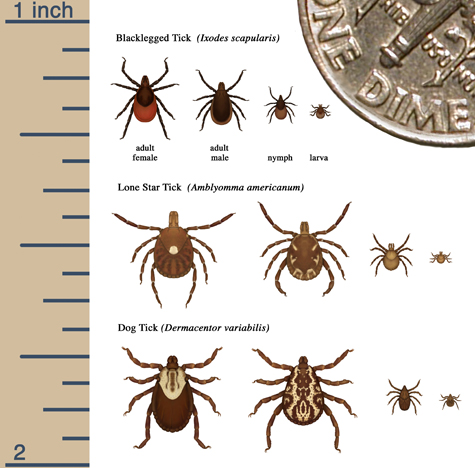About the Maine Forest Tick Survey
Ticks in Maine

Maine has fifteen recorded species of ticks, though the predominant number of tick-borne illnesses are attributed to the black-legged tick (Ixodes scapularis), commonly called the deer tick. The black-legged tick can harbor pathogens responsible for a number of diseases including: Lyme disease, anaplasmosis, and babesiosis. This tick was first detected in Maine in the 1980s and has since expanded its range across the state. While populations are most dense in Southern and Coastal Maine, they are expanding inland and northward and have been found as far as northern Aroostook County.
Tick habitats are associated with forests and forest edges. With a state that is 90% forested, Mainers have a high risk of encountering ticks while working, doing yard maintenance, or engaging in recreational activities. Forest workers and recreationists are particularly vulnerable to tick-borne diseases due to the frequency of time spent in tick habitat, especially in Southern and Coastal Maine.
Goals of the Maine Forest Tick Survey
In order to understand the growing risks of tick-borne diseases in Maine, The University of Maine has developed the state’s first active tick surveillance program. This is a multiyear, multidisciplinary project, established to determine how forest land management practices impact tick populations and disease risk. Information will be gathered with the help of land managers and citizen science landowners. Citizen science volunteers will collect ticks on their wooded properties and we will identify and test them for pathogens. Landowners or managers with upcoming timber harvests or invasive plant removal can allow us to collect ticks before and after management activities. Graduate students on the project are conducting additional research on how forest characteristics impact ticks. The gathered information will help us to understand how to better protect Maine’s landowners, forest workers, and recreationists against ticks and tick-borne diseases.
Click here to learn more about becoming a citizen science volunteer!
Click here to include your property with upcoming management in our tick response study!

